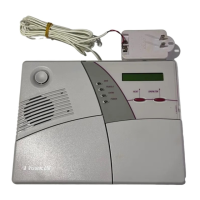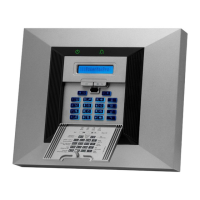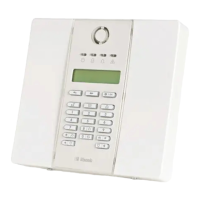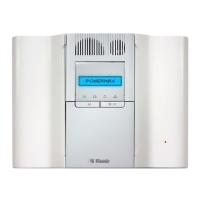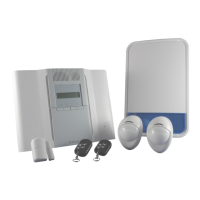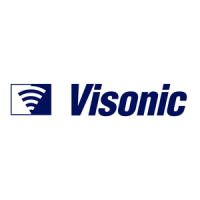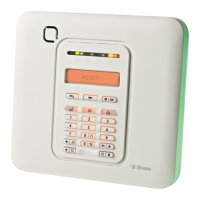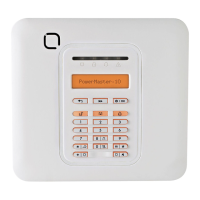DE5465 11
Federal Communications Commission (FCC) Statements
FCC PART 15 STATEMENT
This device complies with Part 15 of the FCC Rules. Operation is subject to the following two conditions: (1) This device may
not cause harmful interference, and (2) This device must accept any interference received, including interference that may
cause undesired operation.
WARNING! Changes or modifications to this unit not expressly approved by the party responsible for compliance
could void the user's authority to operate the equipment.
The digital circuits of this device has been tested and found to comply with the limits for a Class B digital device, pursuant to
Part 15 of the FCC Rules. These limits are designed to provide reasonable protection against harmful interference in residential
installations. This equipment generates, uses and can radiate radio frequency energy and, if not installed and used in
accordance with the instructions, may cause harmful interference to radio and television reception. However, there is no
guarantee that interference will not occur in a particular installation. If this device does cause such interference, which can be
verified by turning the device off and on, the user is encouraged to eliminate the interference by one or more of the following
measures:
Re-orient or re-locate the receiving antenna.
Increase the distance between the device and the receiver.
Connect the device to an outlet on a circuit different from the one which supplies power to the receiver.
Consult the dealer or an experienced radio/TV technician.
FCC PART 68 STATEMENT
This equipment complies with Part 68 of the FCC rules. On the front cover of this equipment is a label that contains, among
other information, the FCC registration number and ringer equivalence number (REN) for this equipment. If requested, this
information must be provided to the telephone company.
This equipment uses the following jacks: An RJ31X is used to connect this equipment to the telephone network. The REN is
used to determine the quantity of devices which may be connected to the telephone line. Excessive RENs on the telephone line
may result in the devices not ringing in response to an incoming call. In most, but not all areas, the sum of the RENs should not
exceed five (5.0). To be certain of the number of devices that may be connected to the line, as determined by the total RENs,
contact the telephone company to determine the maximum REN for the calling area. If this equipment causes harm to the
telephone network, the telephone company will notify you in advance that temporary discontinuance of service may be required.
If advance notice is not practical, the telephone company will notify the customer as soon as possible. Also, you will be advised
of your right to file a complaint with the FCC if you believe necessary. The telephone company may make changes in its
facilities, equipment, operations, or procedures that could affect the operation of the equipment. If this happens, the telephone
company will provide advance notice that will enable you to make the necessary modifications in order to maintain
uninterrupted service.
If trouble is experienced with this equipment, please contact the manufacturer for repair and warranty information. If the trouble
is causing harm to the telephone network, the telephone company may request that you remove the equipment from the
network until the problem is resolved.
There are no user serviceable components in this product, and all necessary repairs must be made by the manufacturer. Other
repair methods may invalidate the FCC registration on this product.
This equipment cannot be used on telephone company-provided coin service. Connection to Party Line Service is subject to
state tariffs.
When programming or making test calls to an emergency number, briefly explain to the dispatcher the reason for the call.
Perform such activities in the off-peak hours; such as early morning or late evening.
Alarm dialing equipment must be able to seize the telephone line and place a call in an emergency situation. It must be
able to do this even if other equipment (telephone, answering system, computer modem, etc.) already has the telephone
line in use. To do so, alarm dialing equipment must be connected to a properly installed RJ31X jack that is electrically in
series with and ahead of all other equipment attached to the same telephone line. If you have any questions concerning
these instructions, you should consult your telephone company or a qualified installer about installing the RJ31X jack
and alarm dialing equipment for you.
Supplier Declaration of Conformity (SdoC)
Visonic, located at 30, 24 Habarzel street, Tel Aviv 69710, Israel, hereby certifies that the Wireless Alarm Control Panel model
“PowerMax+”, bearing the labeling identification number US:VSOAL03BPOWERMAX+ complies with the Federal
Communication Commission’s (“FCC”) Rules and Regulations 47 CFR Part 68, and the Administrative Council on Terminal
Attachments (“ACTA”) adopted technical criteria: TIA/EIA/IS-968, Telecommunications - Telephone Terminal Equipment -
Technical Requirements for Connection of Terminal Equipment to the Telephone Network, July 2001.
09/10/2002
Yaacov Kotlicki
Chairman

